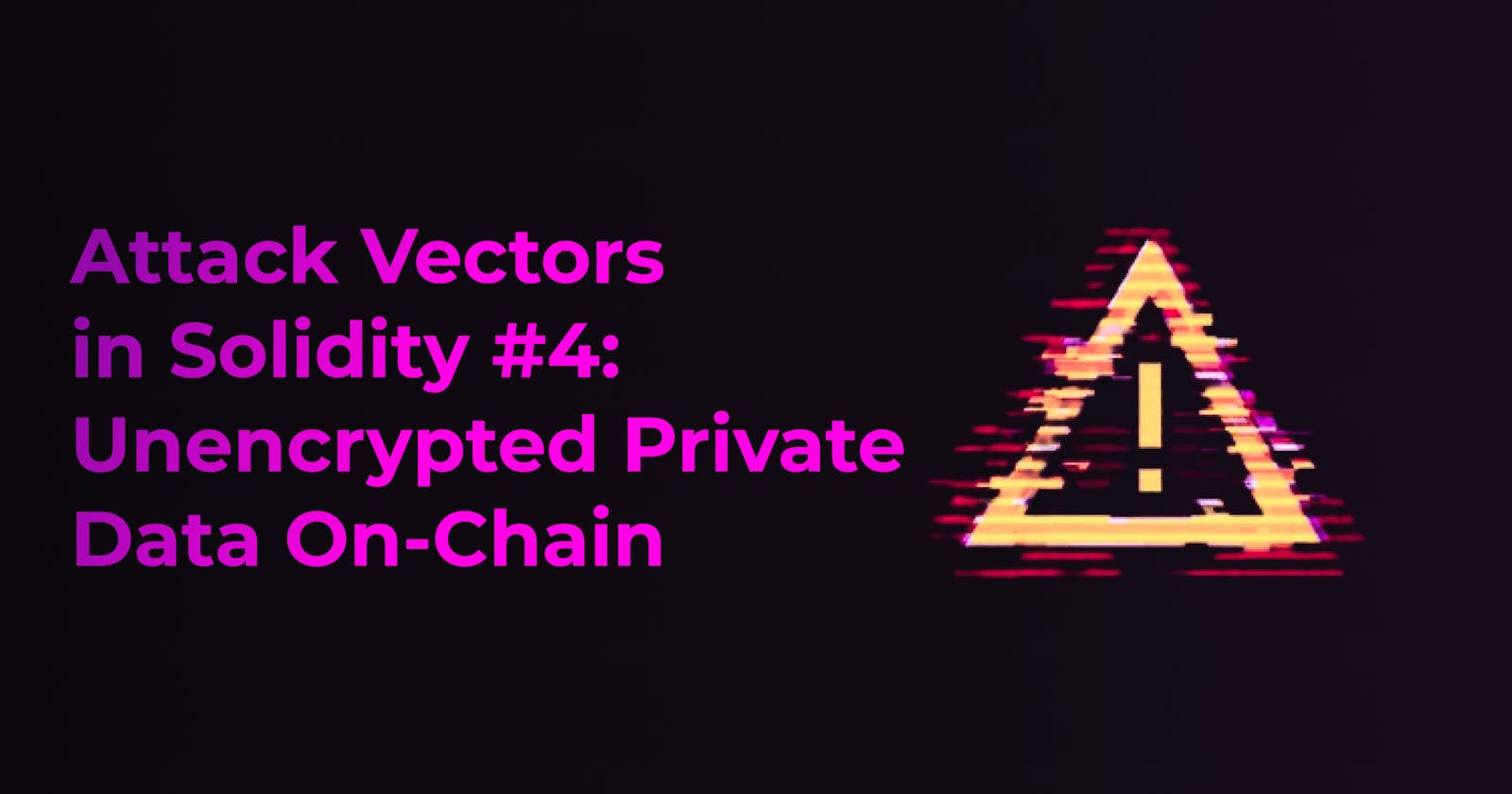Attack Vectors in Solidity #4: Unencrypted Private Data On-Chain
Unencrypted Private Data On-Chain as an Attack Vector
Introduction
Blockchains are increasingly being used to store and manage sensitive data, including personal information, financial records, and intellectual property. While blockchains are designed to be secure and decentralized, storing unencrypted private data on the chain can potentially make it vulnerable to being accessed or modified by unauthorized parties. In this article, we will explore the risks of storing unencrypted private data on a blockchain, and some potential solutions for protecting this data.
Risks of Storing Unencrypted Private Data on a Blockchain
One of the main risks of storing unencrypted private data on a blockchain is the possibility of unauthorized access. Since blockchains are decentralized networks, anyone with access to the chain can potentially view or modify the data stored on it. This includes not only the intended recipients of the data, but also any malicious actors who might be able to gain unauthorized access to the chain.
For example, if an attacker is able to gain access to a blockchain containing unencrypted private data, they could potentially view or modify the data. This could lead to the data being exposed to the public or its integrity being compromised. Additionally, if the data is being used to authenticate or authorize access to sensitive systems or resources, an attacker could potentially use the compromised data to gain unauthorized access to these systems or resources.
Another risk of storing unencrypted private data on a blockchain is the possibility of data loss or corruption. Since blockchains are distributed networks, they are subject to various types of technical failures and errors that could lead to data loss or corruption. For example, if a node on the network fails or is taken offline, it could potentially lead to data being lost or becoming unavailable. Similarly, if there is an error in the software or hardware used to store or manage the data on the blockchain, it could potentially lead to data loss or corruption.
Solutions for Protecting Unencrypted Private Data on a Blockchain
There are several measures that can be taken to protect unencrypted private data on a blockchain and mitigate the risks described above. Some potential solutions include:
Encrypting the data: One of the most effective ways to protect unencrypted private data on a blockchain is to encrypt it before it is stored on the chain. Encrypting the data makes it much more difficult for unauthorized parties to view or modify the data, and can help to protect against various types of attacks. There are many different encryption algorithms and techniques that can be used to encrypt data, and it is important to carefully consider which one is most appropriate for a given situation.
Using secure protocols: Another way to protect unencrypted private data on a blockchain is to use secure protocols to access the data. This might involve using secure socket layers (SSL) or other protocols to establish secure connections between the parties accessing the data. Using secure protocols can help to prevent unauthorized parties from intercepting or modifying the data as it is transmitted over the network.
Implementing other security measures: In addition to encryption and secure protocols, there are many other security measures that can be implemented to protect unencrypted private data on a blockchain. This might include implementing access controls to limit who can view or modify the data, implementing authentication and authorization protocols to verify the identity of users accessing the data, or using monitoring and detection tools to detect and prevent unauthorized access to the data.
Conclusion
In conclusion, unencrypted private data on a blockchain can be an attack vector and it is important to take steps to protect this data. Encrypting the data before it is stored on the chain, using secure protocols to access the data, and implementing other security measures can all help to protect against unauthorized access or modification of the data. By carefully considering the security implications of storing sensitive data on a blockchain, and taking appropriate measures to protect it, organizations can help to ensure the integrity and confidentiality of their data.
Thank you for reading my article. If you enjoyed this article, please consider following me and leaving a comment. I would love to hear your thoughts and feedback. Let me know if you have any questions or suggestions for future articles. Thank you for your support!
